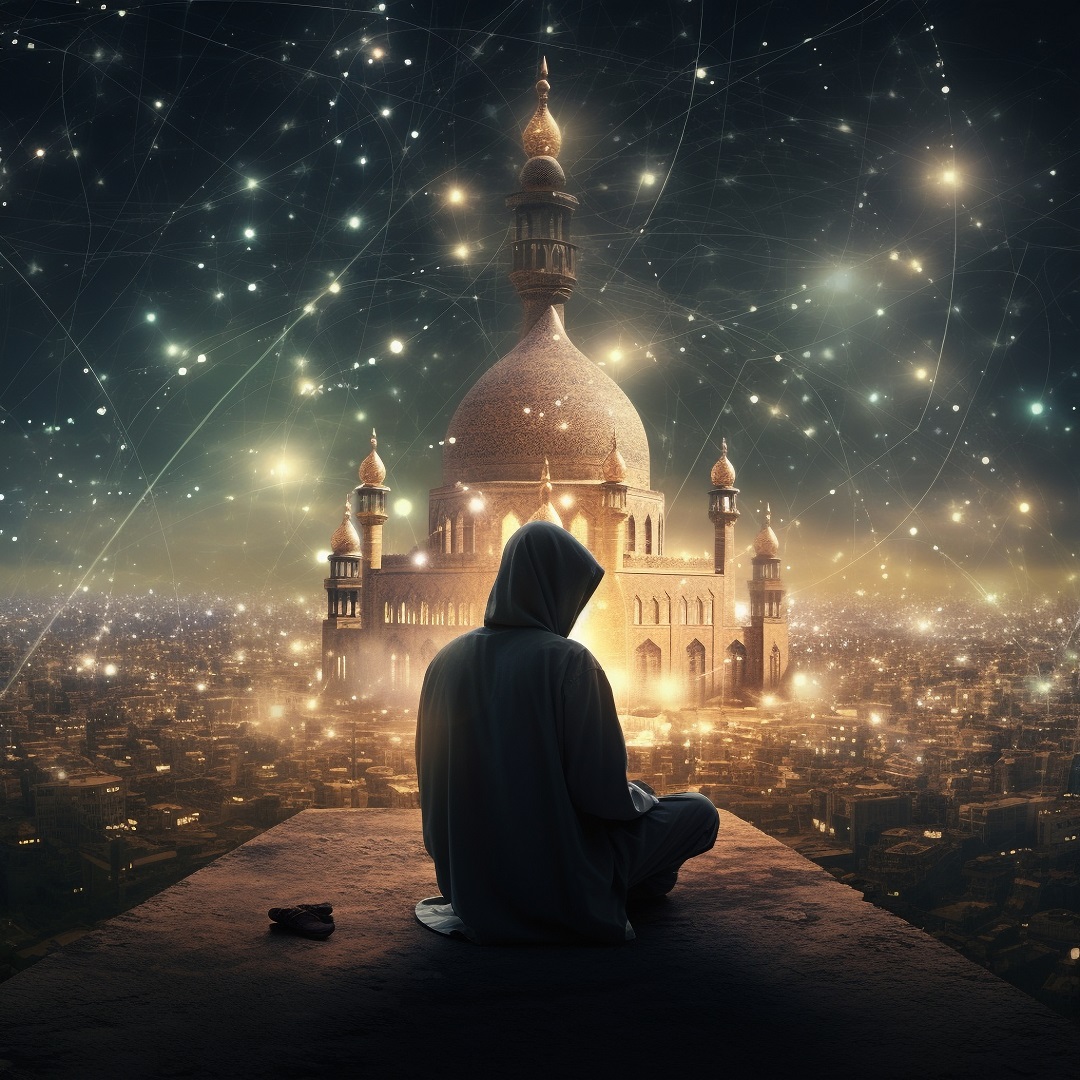
Umrah, also called the minor pilgrimage of Islam, is a special journey that Muslims make to Makkah, Saudi Arabia. It is very significant in Islam because it allows the believers of Allah (SWT) to cleanse their Gunah, renew their Imaan, and strengthen their bond with Allah (SWT). This guide will give you all the essential information you need for this important experience. We’ll cover the rituals, how to prepare, the spiritual benefits, and practical tips to help you have a smooth and fulfilling Umrah.
Essence of the Great Sunnah
Umrah is distinct from Hajj, while the latter is a farz of Islam, the first one is termed as a lesser pilgrimage that can be performed at any month. Mostly it is known as Sunnah, a highly recommended practice established by Prophet Muhammad (PBUH).
At its core, Umrah is a journey of complete submission to Allah (SWT). Through a series of rituals performed in specific attire, pilgrims shed worldly concerns and focus solely on performing the Ibadat of Allah (SWT). Each action, from entering a state of Ihram to circumambulating the Holy Kaaba, carries symbolic meaning and deepens the spiritual connection between the pilgrim and the Almighty.
The Historical Value of Umrah
The tradition of pilgrimage to Makkah stretches back far beyond Islam. Even before the arrival of Prophet Muhammad (PBUH), Arabs from various tribes visited the Holy Kaaba, a cubical structure inside the Grand Mosque of Makkah, have been built by Prophet Ibrahim (AS) and his son, Prophet Ismail (AS).
Prophet Muhammad (PBUH) purified these practices from pre-Islamic idol worship and re-established Umrah as a core tenet of Islam. He performed Umrah multiple times, emphasizing its importance for Muslims seeking spiritual renewal and Allah’s (SWT) blessings.
The Rites of Umrah: A Step-by-Step Guide
Umrah is a beautiful and spiritually significant pilgrimage for Muslims. To help you prepare for this journey, let’s break down the four core rituals of Umrah:
- Entering Ihram: This marks the beginning of your spiritual journey. Muslims in good health and financial standing will cleanse themselves with Ghusl (a full body wash) and wear special Ihram garments. These simple, unstitched clothes signify leaving behind worldly distractions and focusing solely on Allah (SWT). Men wear two seamless pieces of white cloth, while women wear loose-fitting clothing that covers their entire body except for the face and hands. Once in Ihram, certain restrictions apply, such as abstaining from marital relations, arguments, and wearing perfume.
- Performing Tawaf: This is the heart of Umrah. Tawaf involves circumambulating the holy Kaaba, a cubical structure in Makkah, seven times in a counter-clockwise direction. While circling the Holy Kaaba, pilgrims raise their hands in supplication, kiss the Black Stone (if possible), and express their devotion to Allah (SWT). Tawaf represents unity and equality before the most Gracious, as everyone performs it in the same way.
- Completing Sa’i: Following Tawaf, pilgrims move between the hills of Safa and Marwa seven times, commemorating the desperate search for water by Hagar (RA), wife of Prophet Ibrahim (AS), to save the life of her son Ismail (AS). Sa’i symbolizes perseverance, trust in Allah’s mercy, and the importance of seeking help during hardship. Men walk briskly during Sa’i, while women can walk at a normal pace.
- Halq or Taqseer (shaving/trimming hair): This act signifies the completion of Umrah and allows pilgrims to exit the state of Ihram. Men typically shave their heads completely, while women cut a lock of hair. This symbolizes letting go of worldly attachments and submitting to Allah’s (SWT) will.
These rituals, while seemingly simple, hold deep symbolic meaning and serve as a powerful reminder of faith, sacrifice, and the importance of seeking Allah’s (SWT) mercy and blessings.
Choosing the Perfect Time for Your Umrah
Unlike Hajj, Umrah can be performed at any time throughout the year, offering great flexibility for pilgrims. Here’s a quick look at the pros and cons of different seasons:
- Ramadan: The holiest month in Islam, performing Umrah during Ramadan can be incredibly rewarding due to the heightened spiritual atmosphere. However, crowds can be larger, and fasting during that time can add physical challenges.
- Pleasant Weather (Spring & Fall): These seasons offer comfortable temperatures for performing Umrah rituals outdoors. However, these times can also coincide with higher tourist seasons, potentially leading to larger crowds.
- High Season (Summer): While summer offers longer daylight hours, the scorching heat in Makkah can be physically demanding. Be prepared for hot weather if you choose this time.
- Low Season (Winter): Winter offers the benefit of smaller crowds and potentially lower travel costs. However, colder weather can also be a factor, so pack accordingly.
Ultimately, the best time for your Umrah depends on your circumstances, preferences, and priorities. Consider factors like weather, crowd size, budget, and any personal commitments before making your decision.
Preparing for a Successful Umrah
A successful Umrah requires preparation on both a spiritual and practical level. Spiritually, it’s important to strengthen your Niyyah (intention) for undertaking this sacred journey. Reflect on your purpose and make a sincere vow to Allah (SWT) to complete Umrah with devotion and purity. Familiarizing yourself with the rituals beforehand can also enhance your experience.
On the practical side, ensure you have a valid passport and obtain any necessary visas well in advance. Schedule a medical check-up to ensure you’re in good health for the pilgrimage. Pack comfortable clothing suitable for the chosen season, including Ihram garments.
Tips for a Smooth Umrah Experience
Especially for first-time pilgrims, a little guidance can go a long way in ensuring a smooth Umrah. Consider seeking guidance from a trusted travel agency or experienced Umrah guide. They can help with visa applications and logistics, as well as offer insightful advice on carrying out the rites. Familiarizing yourself with the layout of the Haram (Grand Mosque) and key landmarks beforehand can also help you navigate the surroundings with ease.
When performing Umrah, patience and respect are key. Heavy crowds are unavoidable, particularly at the busiest times of the year. Maintain calm and considerate behavior towards fellow pilgrims. Utilize designated queues and avoid pushing or rushing. Remember, everyone is there for the same purpose – to connect with Allah (SWT).
Visiting Holy Sites in Makkah and Madinah
Your Umrah journey isn’t limited to the rituals themselves. Makkah and Madinah are blessed with numerous historical and spiritual landmarks that hold immense significance for Muslims. Here’s a glimpse into some of these revered sites:
Makkah:
- The Kaaba: The holiest site in Islam, the cubical structure towards which Muslims around the world direct their prayers.
- Zamzam Well: A miraculous well said to have sprung forth when Hagar (RA) was desperately in search of water for her thirsty son. Pilgrims drink from the holy water of Zamzam for its spiritual and healing properties.
- Cave of Hira: The cave where Prophet Muhammad (PBUH) received his first revelation from Angel Jibril.
- Maqam Ibrahim: The station of Ibrahim (AS), a stone believed to be where Prophet Ibrahim (AS) stood while building the Kaaba with his son Ismail (AS).
Madinah:
- Prophet’s Mosque: The second holiest site in Islam and the resting place of Prophet Muhammad (PBUH).
- Quba Mosque: Following his migration to Madinah, Prophet Muhammad (PBUH) constructed his first mosque.
- Jannat al-Baqi: A cemetery where many companions and family members of Prophet Muhammad (PBUH) are buried.
Visiting these sites allows you to connect with the rich history of Islam and deepen your understanding of the Prophet’s (PBUH) life and teachings. Wear modest clothes and maintain proper decorum while visiting these holy places.
Spiritual benefits of Umrah
Performing Umrah is a deeply personal and transformative experience that offers a multitude of spiritual benefits. It serves as a powerful opportunity to strengthen your connection with Allah (SWT). The rituals themselves, steeped in symbolism, encourage introspection and a sense of sacrifice. The act of circumambulating the Kaaba and seeking solace between the hills of Safa and Marwa instills a sense of unity and reminds us of our dependence on Allah’s (SWT) mercy. Umrah can also bring inner peace and a renewed sense of purpose.
Challenges and Solutions During Umrah
While Umrah is a journey of immense spiritual reward, it’s natural to encounter some challenges along the way. Here are some practical solutions to help you navigate these challenges:
- Language Barriers: Learning a few basic Arabic phrases for greetings, asking for directions, and essential needs can go a long way. Many resources are available online or through travel guides to help you with this. Additionally, some travel agencies offer Umrah packages with guides who can assist with communication.
- Cultural Differences: Researching customs and proper etiquette in Saudi Arabia beforehand can help you avoid unintentional mistakes. Dressing modestly and being mindful of local customs demonstrates respect for the culture and enhances your overall experience.
Wrapping Up
Umrah has special value for Muslims. The simplicity of the rituals, combined with their profound meaning, creates a powerful experience that can leave a lasting impact. Whether you seek spiritual growth, inner peace, or a chance to reconnect with your faith, Umrah offers a unique opportunity for transformation. Remember, the journey itself is an act of Ibadat, filled with opportunities for learning, reflection, and spiritual growth. Embrace the experience with an open heart and a sincere intention, and you’ll find yourself returning from Umrah a changed person, forever touched by the blessings of this sacred pilgrimage.







